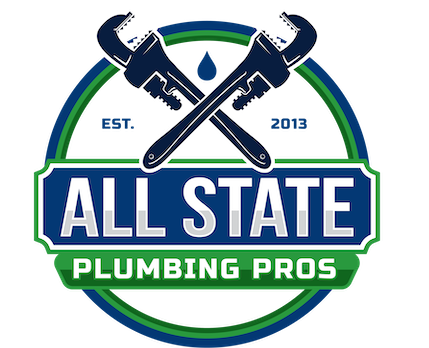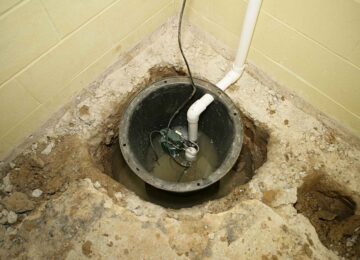Few plumbing issues cause as much frustration as tree roots in a sewer line. A small crack in a drain pipe is all it takes for root hairs to sense moisture and grow inside. Over time, the roots expand, forming a living net that blocks the entire line. For homeowners in Fairfield County, CT, and Westchester County, NY, where mature trees and clay pipe tile pipes are common, this problem appears in both older houses and commercial properties.
When left untreated, tree roots can cause complete blockage problems, sewage backups, and even pipe collapse. In many cases, the only fix is pipe bursting or installing a new pipe as a last resort, which can cost far more than early root removal.
At All State Plumbing Pros, we specialize in identifying and removing roots inside sewer lines with advanced tools like hydro jetting, trenchless repair, and video camera inspections. Our team offers 24/7 drain cleaning services across Connecticut and New York.
Why Tree Roots Invade Sewer Lines
Tree roots grow toward water, oxygen, and nutrients, which makes leaking sewer pipes an ideal target. As tiny root hairs push into joints or cracks, they expand into thick roots that restrict water flow.
- Moisture attraction: Roots seek out even a small water source leaking from a cracked drain pipe.
- Pipe materials: Clay pipe, terra cotta, and old cast iron pipes are more likely to develop cracks and gaps that let roots in.
- Soil conditions: Soil movement and pressure can shift sewer laterals, creating weak points.
- Aging infrastructure: Many CT and NY homes rely on outdated sewer systems, making root intrusion a recurring sewer problem.
Once roots gain entry, they rarely stop. If all the roots are left untreated, they eventually create a completely blocked line.
Signs of Tree Roots in Your Sewer Line
The most common signs of tree roots in sewer pipes are slow drains, recurring clogs, sewage odors, and unusual lawn growth. These issues appear across multiple fixtures, including the toilet, and often indicate the main line is compromised.
Warning Signs Checklist
| Symptom | What It Suggests |
|---|---|
| Slow sink, tub drains, or shower drain | Roots are partially blocking the drain pipe |
| Gurgling noises from the toilet bowl or drains | Root intrusion trapping air in the sewer line |
| Sewage smell in the basement or yard | Waste leaking from cracked pipes |
| Multiple clogs in the same week | Roots growing inside the main sewer line |
| Lush patch of grass in the front yard | Pipe break releasing nutrients into the soil |
How Plumbers Remove Tree Roots from Sewer Lines
Plumbers use a combination of mechanical, chemical, and trenchless methods to remove tree roots and restore water flow. While products from a local hardware store may promise to “kill roots,” they rarely provide a lasting solution.
Common Root Removal Methods
| Method | Description | Pros | Cons |
|---|---|---|---|
| Mechanical Root Cutter | An auger or a snake is used to mechanically remove roots | Fast relief, clears blockage in a few hours | Roots grow back; repeat service is often needed |
| Hydro Jetting | High-pressure water jet cleans the sewer drain and cuts roots | Cleans the entire pipe and removes debris | Doesn’t repair cracked pipe; may need lining |
| Chemical Root Killers (Copper Sulfate Crystals, Root Destroyer Foams) | Applied inside sewer pipes to kill roots | Can slow regrowth, inexpensive | Chemicals may damage soil or septic systems, not permanent |
| Trenchless Pipe Lining or Pipe Bursting | Creates a new pipe inside the old line or replaces it underground | Lasting solution, avoids a large dig | Higher upfront cost |
| Full Replacement | Digging up and replacing the line with PVC pipe | Permanent fix | Most disruptive and costly option |
Professional plumbers often combine methods: mechanically remove roots first, hydro jet for thorough cleaning, then recommend trenchless repair or replacement to prevent more roots from entering.
Can Tree Roots Permanently Damage Sewer Lines?
Yes. If left untreated, tree roots can crack, collapse, and destroy sewer pipes. A single root intrusion can spread until the main sewer line is completely blocked, causing wastewater to back up into toilets, showers, and tub drains.
The long-term risks include:
- Pipe collapse, requiring excavation or replacement.
- Sewage leaks are weakening soil and foundations.
- More roots are growing back repeatedly until the problem is fixed.
Delaying repair often means spending more money later. In our experience, a homeowner who ignored recurring clogs for six months eventually discovered that the stuff works only temporarily and had to replace the entire sewer lateral at triple the cost of early trenchless repair.
How to Prevent Tree Roots in Sewer Lines
Preventing root intrusion means managing landscaping, maintaining pipes, and scheduling routine inspections.
- Tree placement: Don’t plant large trees near sewer laterals. Roots grow toward moisture and can reach pipes dozens of feet away.
- Root barriers: Installed near pipes to control roots from spreading into the line.
- Regular inspections: Video camera inspections every 1–2 years catch problems before they become severe.
- Upgrading pipes: Replace fragile clay tile and cast iron with PVC pipe for a lasting solution.
- Preventive sewer cleaning: Hydro jetting or snaking once every few years can control roots before they block the line.
When to Call a Professional Plumber
Call a plumber immediately if multiple drains clog at once, sewage smells appear, or you notice water backing up from a floor drain or toilet. These are red flags of roots in the main line and issues within the sewer system.
DIY chemical root killers may offer temporary relief, but professional tools like root cutters, hydro jetting, and trenchless technology provide a lasting solution.
All State Plumbing Pros offers 24/7 emergency plumbing services across Fairfield County and Westchester County. From diagnostics to complete sewer cleaning, we provide reliable solutions when sewer problems strike.
How Much Does It Cost to Fix Tree Roots in Sewer Lines?
The cost of fixing tree root intrusion in sewer pipes depends on the severity of the blockage, the method used, and the length of the damaged line. Minor root removal using a mechanical cutter or hydro jetting may cost a few hundred dollars. However, if the sewer pipe is cracked or collapsed, trenchless pipe lining or pipe bursting will be more expensive but provide a lasting solution.
Several factors influence cost:
- Extent of root growth: A small blockage requires less work than roots that spread across the main sewer line.
- Pipe material: Clay tile and cast iron pipes are more likely to need replacement with PVC pipe.
- Repair method: Hydro jetting is affordable, while trenchless lining or new pipe installation costs more upfront.
- Property layout: Pipes located under driveways, trees, or concrete may increase excavation costs.
Because prices vary, the best first step is a camera inspection to assess the damage and determine the most effective fix. This prevents wasted money on temporary solutions and helps you plan for a lasting repair.
Does Homeowners Insurance Cover Tree Root Damage?
One of the most common questions homeowners ask is whether their insurance will pay for tree root removal and sewer line repairs. The answer depends on the policy. Standard homeowners insurance often covers sudden, accidental damage but excludes gradual wear and tear, including root intrusion.
- Typically covered: Damage caused by a sudden pipe break that results in water damage inside the home.
- Typically not covered: Gradual root growth or long-term pipe deterioration, which insurers classify as maintenance issues.
- Optional coverage: Some providers offer sewer line endorsements or “service line coverage” that help pay for repairs or replacement.
If you live in an area like Fairfield County, CT, or Westchester County, NY, where root intrusion is common, it may be worth asking your insurer about sewer line insurance or adding coverage. Even if not covered, professional inspections and proactive repairs are far less costly than dealing with a collapsed sewer line.
Long-Term Risks of Ignoring Tree Root Intrusion
Tree roots inside a sewer line don’t stay small for long. Once roots establish themselves, they grow thicker, spread further, and eventually turn a minor clog into a major sewer problem. Ignoring the issue can have serious long-term consequences.
- Recurring blockages: Roots regrow quickly after temporary fixes, leading to repeat clogs every few months.
- Structural damage: Root pressure can break pipes, forcing costly excavation or replacement.
- Property damage: Sewage backups can flood basements, contaminate floors, and weaken foundations.
- Health hazards: Wastewater exposure increases the risk of bacteria, mold, and foul odors inside the home.
For homeowners in Connecticut and New York, where mature landscaping surrounds many older homes, root intrusion is not just a nuisance; it’s a long-term risk that can easily escalate if left untreated.
Professional Solutions vs. DIY Root Killers
Many homeowners turn to products like copper sulfate crystals or foaming root killers from a local hardware store to manage sewer blockages. While these chemical treatments, like tree root killer, can kill roots inside a pipe, they are rarely a complete solution. DIY approaches may clear a clog temporarily but do little to address cracks, soil pressure, or ongoing root growth.
Professional plumbers provide lasting solutions by combining:
- Camera inspections to pinpoint the location and severity of root intrusion.
- Hydro jetting and mechanical removal to restore water flow quickly.
- Trenchless lining or pipe bursting to install new, durable PVC pipe without major digging.
- Preventive maintenance that reduces the chance of roots returning.
Unlike short-term DIY fixes that often require you to dig, professional services ensure the problem is eliminated at its source and the sewer system is restored for years to come.
Conclusion
Tree roots in sewer lines aren’t just a minor inconvenience; they’re a serious plumbing problem that can quickly escalate. Once roots find a water source, they grow rapidly, spreading through sewer pipes until they cause a complete blockage. What begins as a slow drain can turn into sewage backups, costly repairs, and even pipe replacement within months if left untreated.
If you’re dealing with slow drains, sewage odors, or suspect tree roots are blocking your sewer line, don’t wait until the problem causes a complete backup. At All State Plumbing Pros, our licensed plumbers are available 24/7 to help homeowners and businesses across Connecticut and New York. From camera inspections and hydro jetting to trenchless sewer repair, contact us today for fast, dependable service you can trust.
FAQs
What dissolves tree roots in sewer lines?
Copper sulfate crystals, foaming root killers, and other chemical products can kill roots inside pipes. While this may control roots for a short time, the most effective method is professional hydro jetting followed by trenchless repair to prevent regrowth.
Is it common to have tree roots in a sewer line?
Yes. In neighborhoods with older clay pipes and mature trees, root intrusion is one of the most common causes of sewer clogs. Many CT and NY homes face this same problem regularly.
How much does it cost to remove roots from drains?
The cost depends on the method. Mechanical removal might be a few hundred dollars, while trenchless pipe lining or bursting costs more but provides a lasting solution. A camera inspection is the best way to know what’s needed.
How do plumbers clear tree roots?
Plumbers mechanically remove roots with augers, use hydro jetting for complete cleaning, or apply foaming root killers. For severe damage, they may recommend trenchless lining or full replacement with PVC pipe.

![Tree Roots in Sewer Line: Causes and Expert Fixes Few plumbing issues cause as much frustration as tree roots in a sewer line. A small crack in a drain pipe is all it takes for root hairs to sense moisture and grow inside. Over time, the roots expand, forming a living net that blocks the entire line. For homeowners in Fairfield County, CT, and […]](https://allstateplumbingct.com/wp-content/uploads/2025/10/tree-roots-in-sewer-line-750x420.jpg)



Leave a Reply